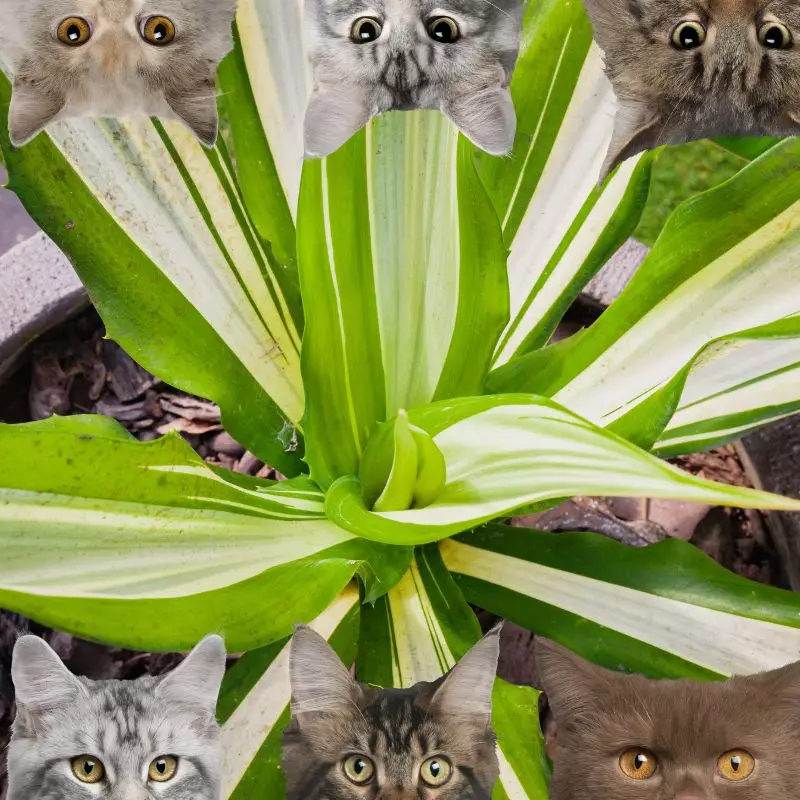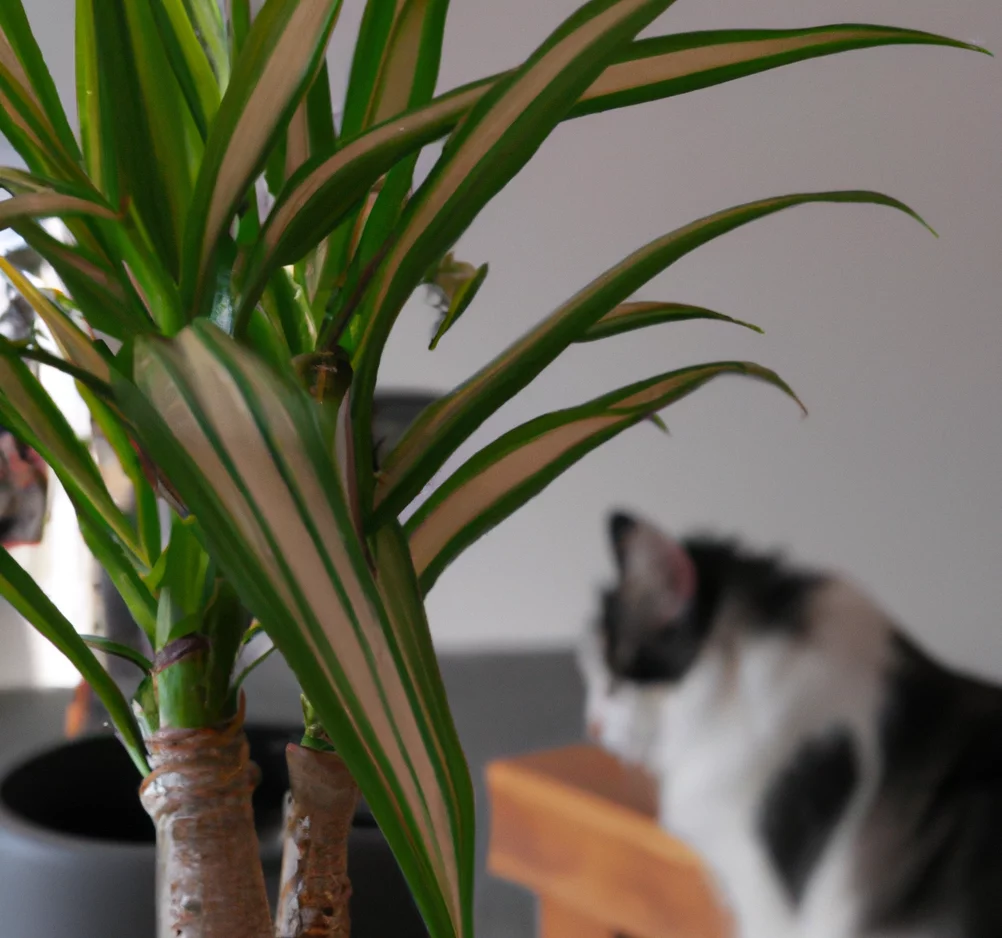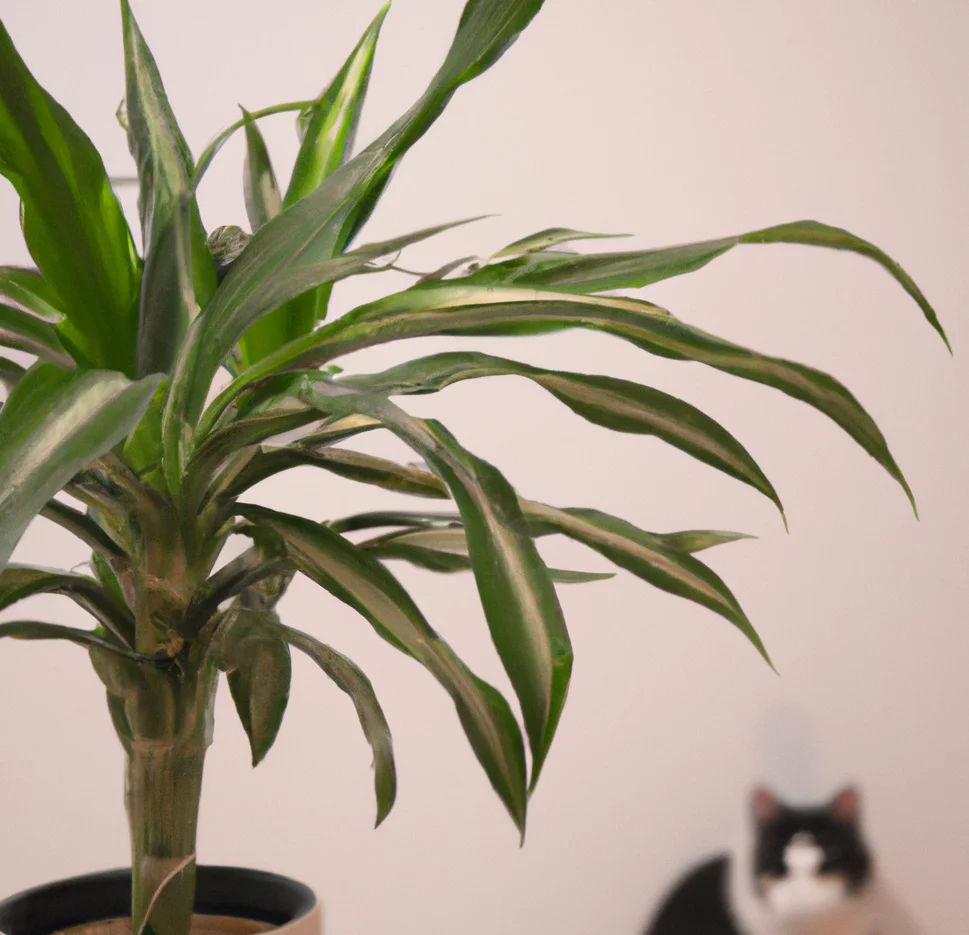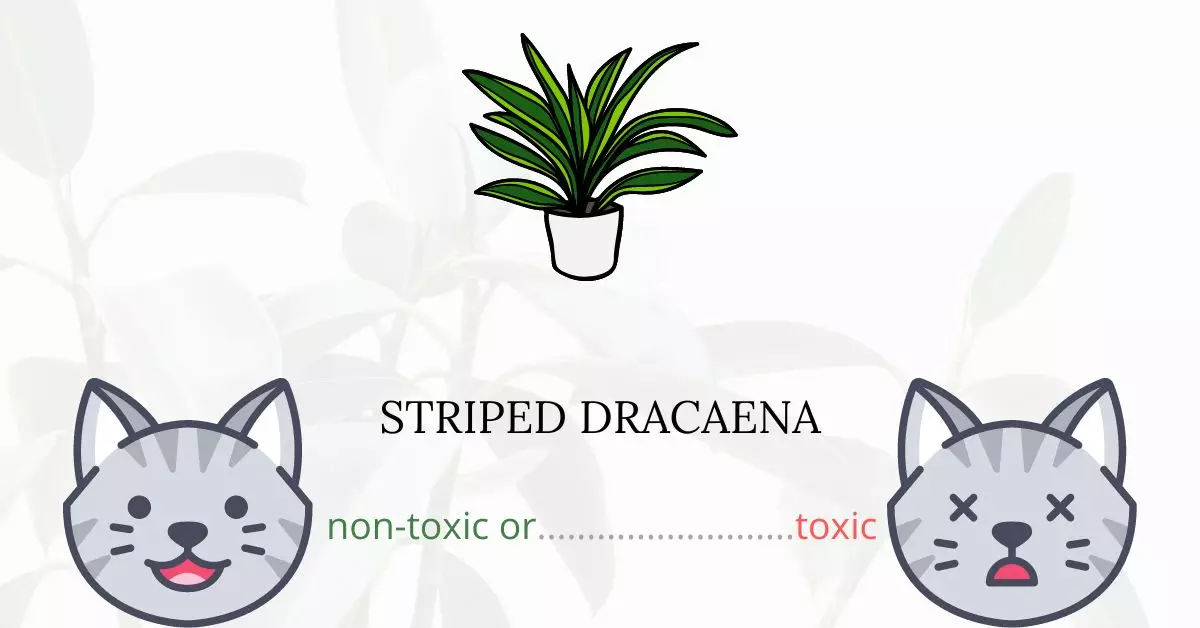Striped and Warneckii Dracaena are indeed toxic to cats, providing a straightforward answer to pet owners’ concerns. This evergreen plant, while aesthetically pleasing, contains components that induce negative effects in cats, although the specific toxic component remains unidentified. Ingesting these plants can cause emesis in cats due to their bodies’ struggle to eliminate the indigestible substances. When cats consume parts of this plant, the inability to digest or metabolize its components, due to a lack of necessary enzymes to break down fibers, can lead to severe consequences, typically resulting in the body expelling it through vomiting or allowing it to travel harmlessly through the system, emerging undigested.
This article has been crafted in collaboration with a team of experienced Doctors of Veterinary Medicine (DVMs) who have provided invaluable insights and knowledge on the toxicity of Warneckii Dracaena to cats. Their contributions enable us to deliver accurate and current information on the potential risks associated with this and various other plants and their effects on feline friends. Furthermore, we have rigorously researched high-authority websites, such as ASPCA and PetMD, to substantiate every piece of information related to every plant discussed, ensuring the reliability and accuracy of the content provided.
Clinical Signs of Striped or Warneckii Dracaena Poisoning in Cats

Clinical manifestations of Striped or Warneckii Dracaena poisoning in cats can fluctuate, largely dependent on the quantity of the plant material ingested and the size of the affected cat. When a cat comes into contact with, smells, or consumes the Warneckii Dracaena plant, various physiological reactions, often negative, are triggered, due to the unknown toxic component present in the plant. Below is a comprehensive overview of each clinical sign and its respective cause:
- Abdominal Pain: The ingestion of the toxic elements of the plant can lead to irritation of the stomach lining, causing discomfort and pain in the abdominal area.
- Vomiting: As cats lack the enzymes needed to metabolize and digest the fibrous components of the plant, their bodies naturally try to expel the undigested material, leading to vomiting.
- Depression: The toxic elements of the plant can affect the cat’s central nervous system, possibly resulting in a noticeable decrease in activity, interaction, and overall mood.
- Dilated Pupils: The plant’s toxic components can impact the cat’s autonomic nervous system, leading to the dilation of pupils as a physiological response to poisoning.
- Increased Heart Rate: The toxins can stimulate the cat’s cardiovascular system, potentially causing an elevated heart rate as the body reacts to the ingested harmful substances.
- Loss of Coordination: Impairment of the central nervous system due to the plant’s toxic elements may lead to a lack of coordination and balance, impacting the cat’s mobility.
- Weakness: The overall physical condition of the cat can deteriorate due to the body’s struggle to counteract the toxic elements, leading to weakness and lethargy.
- Excessive Drooling: The irritation of the gastrointestinal tract, as a result of consuming the plant, can stimulate excessive saliva production and subsequent drooling.
Each clinical sign serves as a critical indicator of the potential poisoning, and immediate veterinary attention is crucial to mitigate the negative effects and ensure the well-being of the affected cat.
First Aid and Treatment of Striped or Warneckii Dracaena Poisoning in Cats

In circumstances when the cats have consumed a substantial amount of Dracaena, therapy will be primarily symptomatic. If the consumption was recent, remove any remaining plant debris from the mouth; if vomiting does not occur, the veterinarian will induce vomiting by giving hydrogen peroxide orally.
To avoid further toxin absorption, the vet may also give activated charcoal. If the veterinarian deems it essential, gastric lavage may be done. To help in the improvement of the cat’s condition, medications to alleviate additional symptoms will be administered.
Recovery from Striped or Warneckii Dracaena Poisoning in Cats

In most cases, cats recover completely after treatment. Severe cases are rare but in case your cat has ingested a large portion of striped dracaena, recovery may take longer than usual. Once home, allow your cat to rest comfortable in a quiet and warm space. Tak to the vet regarding post-treatment instructions, if there are any.
Prevention of Striped or Warneckii Dracaena Poisoning in Cats
Avoid growing striped dracaenas at your home. Keep your home cat-friendly as much as possible. Restrict your cat’s access outdoors to reduce the chances of getting in contact with a striped dracaena or other toxic plants in your neighbor’s yard.
If you love plants but have cats at home, check out these lists:





